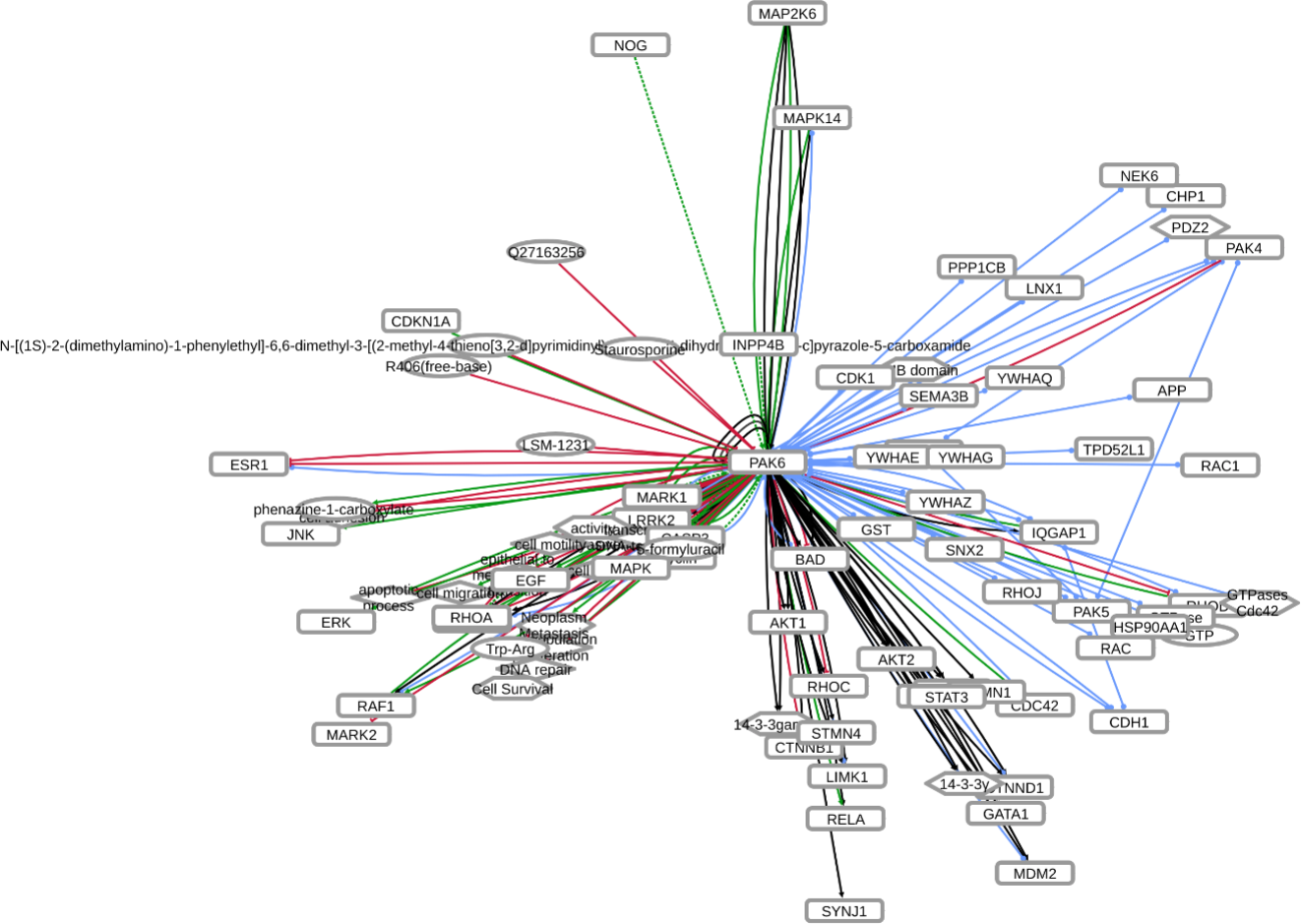PAK6
p21 (RAC1) activated kinase 6




These figures show a summary of data collected by the cancer genome atlas for PAK6. The mutations heatmaps shows the fraction samples with each type of genetic mutation, while the copy number variation shows the percentage of samples where a deletion or amplication was dectected. Finally, the mRNA expression tab shows the amount of mRNA detected on a log-2 scale for each cancer type. The X-axis cancer type abbreviations are described here. This summary of the cancer genome atlas (TCGA) was collated from firebrowse developed by the Broad Institute. The code used to produce these figures is available through github.
Kinase Domain Structure:
- Title: Crystal Structure Of The Human P21-Activated Kinase 6
- Resolution: 1.6
Associated Compounds:
- CHLORIDE ION
- PHOSPHATE ION
- PHOSPHOSERINE
View This Structure on RCSB PDB
Kinase Domain Structure:
- Title: PAK6 kinase domain in complex with PF-3758309
- Resolution: 1.4
Associated Compounds:
- PF-3758309
- ISOPROPYL ALCOHOL
- PHOSPHOSERINE
View This Structure on RCSB PDB
Kinase Domain Structure:
- Title: PAK6 kinase domain in complex with sunitinib
- Resolution: 1.95
Associated Compounds:
- N-[2-(diethylamino)ethyl]-5-[(Z)-(5-fluoro-2-oxo-1,2-dihydro-3H-indol-3-ylidene)methyl]-2,4-dimethyl-1H-pyrrole-3-carboxamide
- PHOSPHOSERINE
View This Structure on RCSB PDB
INDRA (Integrated Network and Dynamical Reasoning Assembler) is an automated model assembly system drawing from natural language processing systems and structured databases. It collects mechanistic and causal assertions, represents them in a standardized form (INDRA Statements), and assembles them into various modeling formalisms including causal graphs and dynamical models. More information on this work can be found on Github. In this particular figure, several interaction-types are depicted; physical complexes (blue), phosphorylation (black), and general up- or downregulation (green and red, respectively). Biomacromolecules are represented as squares, small molecule as circles, and biological processes and diamonds. The thickness of each line reflects a confidence score, with thicker lines higher in confidence.
Affinity Purification - Mass Spectrometry
The expression of kinases varies widely across the human tissues assayed by the GTEx project and the Human Proteome Map. To gain a better understanding of the kinase tissue distribution, we've created an application that describes and summarizes the expression of each dark kinase in the context of the rest of the kinome. This interactive window onto the full applications shows the data associated with PAK6. The graph summarizes the expression of the kinase across all the organ systems.
The full application can further explored at the Kinase Expression Data Application.
The Reactome Knowledgebase of Human Biological Pathways and Processes is a curated and peer-reviewed knowledgebase available online as an open access resource that can be freely used and distributed by all members of the biological research community. This view of the reactome database is focused on PAK6 and displays the pathways associated with PAK6.
